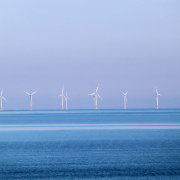Maritime Spatial Planning: most countries late, offshore wind must remain a priority
Source: wind europe
Only 6 EU countries met the deadline for the submission of the final Maritime Spatial Plans. Others will need to ensure that their Plans are aligned with EU climate goals and allow for the development of offshore wind.
Offshore wind will play a central role in helping the EU meet its climate goals and decarbonise its economy. The EU Commission see offshore wind being 30% of Europe’s electricity by 2050. The EU Offshore Renewable Energy Strategy (ORES) set a target of 300 GW offshore wind for the EU by 2050, 25 times more than what the EU has today. But many activities already take place in the sea: shipping, fisheries, sand extraction, military activity, etc. And many areas are protected for marine conservation. To ensure that all these different activities take place in an efficient, safe and sustainable way, governments and stakeholders do Maritime Spatial Planning (MSP). MSP allows governments to plan and decide on the spatial and temporal distribution of activities and uses in the sea.
The EU Maritime Spatial Planning Directive requires coastal Member States to submit their Maritime Spatial Plans to the Commission by 31 March 2021. However only 6 of them met the deadline: Belgium, Denmark, the Netherlands, Finland, Latvia, and Portugal. The other 16 failed to send in their Plans on time: Germany, France, Croatia, Cyprus, Estonia, Greece, Ireland, Italy, Lithuania, Malta, Poland, Slovenia, Sweden, Romania, Bulgaria and Spain.
Read the full text here

